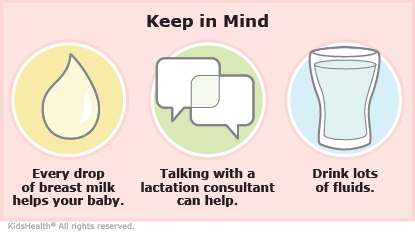Breast milk gives babies the nutrition they need and offers health benefits for both mother and child. Babies who are breastfed are less likely to get infections, allergies, and some illnesses. Breastfeeding is also much less expensive than formula feeding.
Babies born early may need some extra time or support as they learn to breastfeed. Use these care instructions and work closely with your health care provider as you and your baby learn to breastfeed.


Take Care of Yourself

Your baby:
You:

I am finding breastfeeding hard. Where can I get help? Breastfeeding takes time and practice. Talk to your health care provider if you are having trouble with breastfeeding. A lactation consultant or mother's support group can also offer help.
You can find help online at:
If you feel down or sad, or have trouble taking care of your baby, talk to your health care provider about getting help.